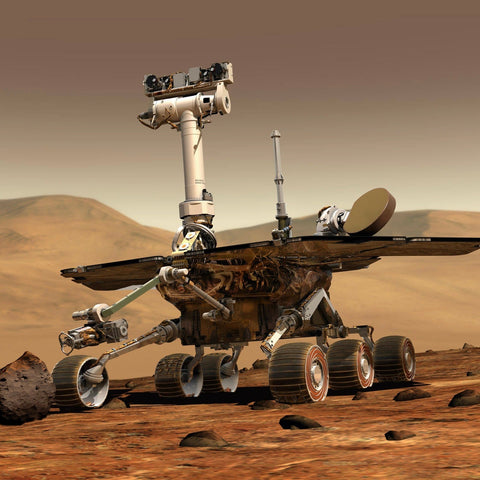In the vast reaches of our solar system, Mars stands as a captivating neighbor, holding secrets waiting to be uncovered. Among the intrepid robotic explorers sent to study the Martian landscape, the Mars Rover Opportunity emerges as a resilient symbol of scientific discovery. Join us as we embark on a journey to explore the Red Planet's surface through the lens of Opportunity, a rover that surpassed all expectations and left an indelible mark on Mars exploration.
Rover Opportunity: The Launch and Arrival
Rover Opportunity, a part of NASA's Mars Exploration Rover mission, was launched alongside its twin rover, Spirit, on July 7, 2003. The purpose of the mission was to study the geology and climate of Mars and search for signs of past water activity. Rover Opportunity touched down on the Martian surface on January 25, 2004, in Meridiani Planum, a region rich in hematite, a mineral associated with water.
The Resilience of Opportunity:
Originally designed for a mission duration of 90 Martian days (sols), both Rover Spirit and Rover Opportunity exceeded expectations. Rover Opportunity, in particular, showcased remarkable resilience. Its solar panels allowed it to generate power, and despite facing challenges such as dust storms and aging components, the rover continued to explore the Martian surface for over 15 years, covering a distance of more than 28 miles.
Scientific Discoveries:
Rover Opportunity's scientific instruments, including a panoramic camera and a rock abrasion tool, enabled detailed observations of Martian rocks and soil. One of its most significant discoveries was evidence of past water on Mars. The rover found sedimentary rocks containing hematite "blueberries," indicating the presence of water that could have supported microbial life billions of years ago.
Endurance Crater and Beyond:
Rover Opportunity's exploration included a journey to Endurance Crater, where it made important geological observations, and later to Victoria Crater. The rover's longevity allowed it to witness seasonal changes and study the effects of wind and dust on the Martian surface. Rover Opportunity's extended mission provided valuable data for understanding the planet's history and climate dynamics.
End of Mission and Legacy:
After enduring a global dust storm that blocked sunlight, leading to a loss of power, Rover Opportunity ceased communication on June 10, 2018. NASA declared the mission complete on February 13, 2019. Rover Opportunity's legacy, however, lives on through the wealth of scientific data it transmitted to Earth. The rover's findings continue to shape our understanding of Mars and inform future missions, contributing to the broader narrative of planetary exploration.
The story of Mars Rover Opportunity is a testament to the marvels of human ingenuity and the spirit of exploration. From its remarkable arrival on the Martian surface to its enduring legacy, Opportunity exceeded all expectations, reshaping our understanding of Mars and providing invaluable insights into the planet's geological and climatic history. As we bid farewell to this resilient rover, we celebrate the indomitable spirit that drives us to explore the cosmos and unravel the mysteries of our celestial neighbors.






